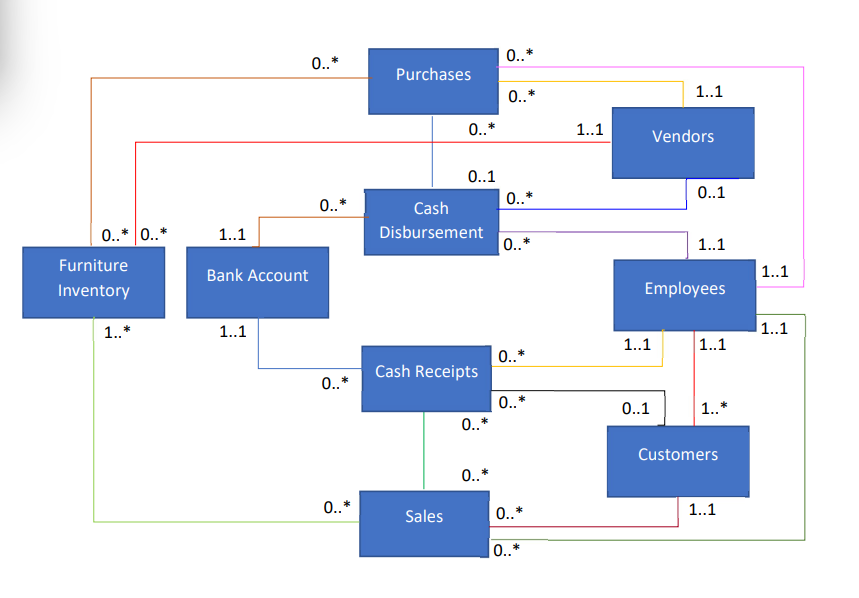Prepare integrated uml class diagram for brock ltd
The purchasing clerk runs an inventory report everyday to identify the items that should be purchased based on the reorder point of each inventory item. When employees from various departments need to purchase something, they fill in a purchase requisition form and send it to the purchasing clerk. Brock Ltd. creates a purchase order for each purchase requisition of inventory items, office supplies, or services. For each purchase order, there is one receipt. For each receipt, there is one purchase order. All the vendors are required to create one invoice for each purchase order after goods are delivered and received in good condition.
Accounts Payable
Each type of furniture inventory is given a unique identification number and a suggested selling price. Each sale includes one or more pieces of furniture and can be paid for in one of the following three ways: (1) immediately in cash; (2) on the 15th of the following month; (3) over the period of six months.
When customer data is initially entered into Brock’s information system, the customer is immediately assigned to a salesperson. When a salesperson is hired, he or she is immediately assigned to a group of customers. No more than one salesperson participates in making a particular sale. A salesperson may negotiate with a customer and agree on a selling price that is lower than that furniture’s suggested selling price, especially if the customer is a high-volume customer or if that furniture is a slow seller (i.e., it has been in stock for a long time).
Information about furniture, employees, and customers often needs to be entered into the database before any transactions involving them have occurred. Ignore purchase discounts and HST.
Exercise Instructions (Preparation)
| Complete your UML class diagram for this exercise. NO Submissions needed. Make sure to try the exercise, and understand the logic of the UML class Diagram. Please include the following in your UML class diagram: |
|---|
2. Associations
3. Multiplicities: ask the following questions to help you determine
the multiplicity for Class A
Minimum: for each instance of Class A, what is the
minimum number of times it must be related to Class
B
c. Create a list of schemas for all the classes and submit it together with your UML class diagram
Notes:


Create a sales invoice form (use a form with a sub-form) that includes at least the following fields: invoice date, invoice number, total amount, inventory type, actual sale quantity, actual sale price.
Prepare a query to meet each of the following requirements:
Query 5: for all the inventory types with unit cost greater than $1,000, increase the suggested selling price by 15%
Submission:
Enter the data given above into the access program that you created with one of the following options:
Import the data (Recommended; you may create a new Access file to import the data and then link the tables based on their relationships as determined in Phase I & II)
Which inventory type generated the most gross profit?
Which inventory category generated the most sales revenue?
Use Power BI to “Get Data” from your Access database (or the spreadsheets given) and create the following:
a. A dashboard that shows the following:
A pie chart showing the sales revenue earned from the sale of all the inventory types provided by each vendor for the month of May, 2019.
b. Create a map of customer locations based on city.
iii. The exported PDF file that contains both the dashboard and the map (Requirement #6);
iv. The Access file that you used to create the inventory performance report required by #2;
